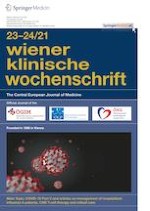Background
Principles of CAR T‑cell therapy
Key toxicities related to CAR T-therapy
Grade 1 | Grade 2 | Grade 3 | Grade 4 | |
|---|---|---|---|---|
CRS parameter | ||||
Fevera | ≥ 38.0 | ≥ 38.0 | ≥ 38.0 | ≥ 38.0 |
With | ||||
Hypotension | None | Not requiring vasopressors | Requiring vasopressors +/− vasopressin | Requiring multiple vasopressors (excl. vasopressin) |
And/or | ||||
Hypoxia | None | Requiring low-flow nasal cannula (≤ 6 L/min) | Requiring high-flow nasal cannula (> 6 L/min) facemask, nonrebreather mask, or venturi mask | Requiring positive pressure (e.g. CPAP, BiPAP, and mechanical ventilation) |
Neurotoxicity domain | ||||
ICE scoreb | 7–9 | 3–6 | 0–2 | 0 (patient is unarousable and unable to perform ICE) |
Depressed level of consciousness | Awakens spontaneously | Awakens to voice | Awakens only to tactile stimulus | Patient is unarousable or requires vigorous or repetitive tactile stimuli to arouse. Stupor or coma |
Seizure | N/A | N/A | Any clinical seizure, focal or generalized, that resolves rapidly or non-convulsive seizures on EEG that resolve with intervention | Life-threatening prolonged seizure (> 5 min); or repetitive clinical or electrical seizures without return to baseline in between |
Motor findings | N/A | N/A | N/A | Deep focal motor weakness such as hemiparesis or paraparesis |
Elevated ICP/cerebral oedema | N/A | N/A | Focal/local edema on neuroimaging | Diffuse cerebral oedema on neuroimaging; decerebrate or decorticate posturing; or cranial nerve VI palsy; or papilledema; or Cushing’s triad |
